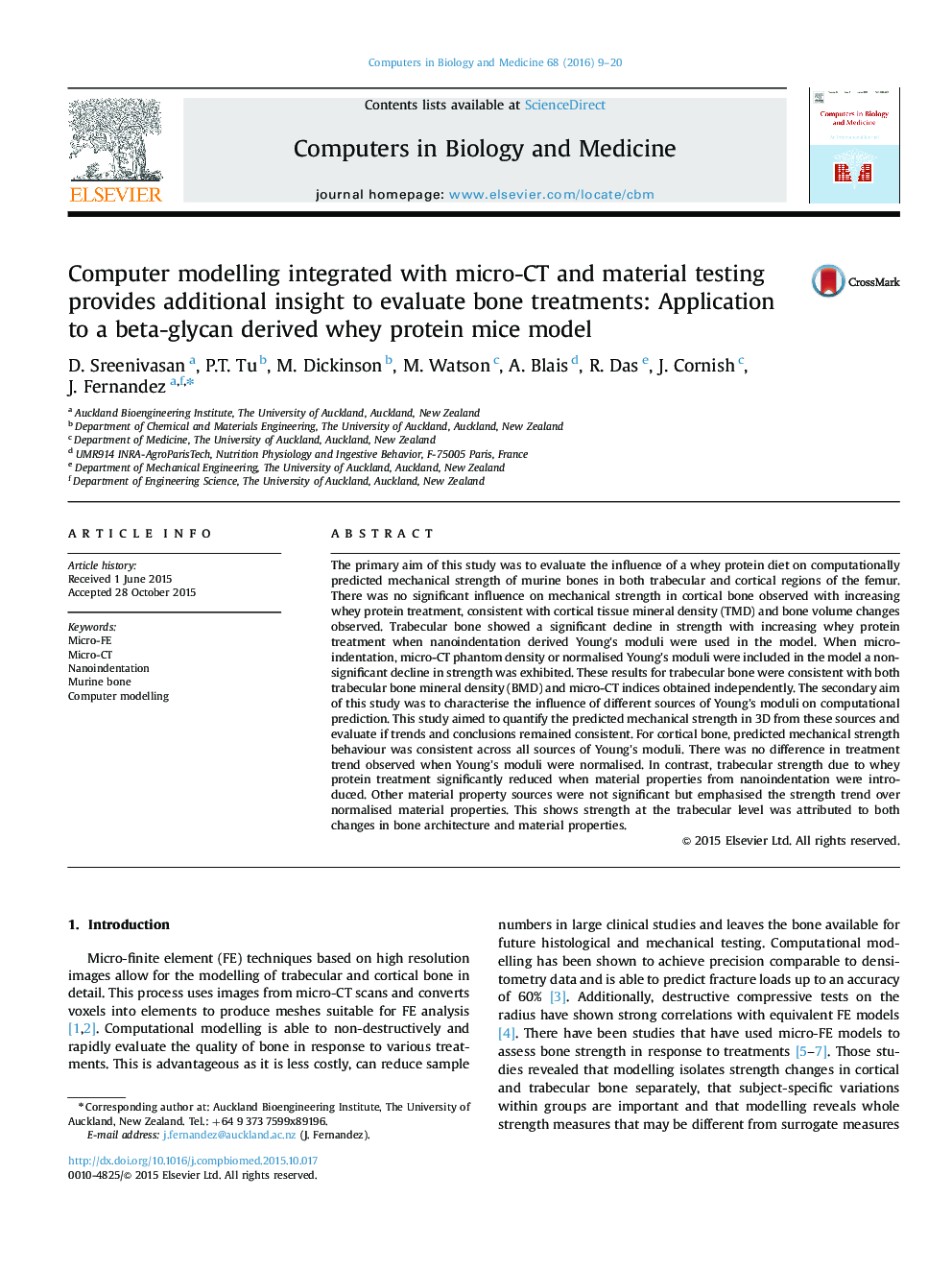| کد مقاله | کد نشریه | سال انتشار | مقاله انگلیسی | نسخه تمام متن |
|---|---|---|---|---|
| 504825 | 864440 | 2016 | 12 صفحه PDF | دانلود رایگان |
• Computer prediction of a whey protein bone treatment on bone strength.
• Comparison of 3-point bending, micro/nano-indentation and CT material estimates.
• Evaluation of bone strength from geometry independent of material properties.
The primary aim of this study was to evaluate the influence of a whey protein diet on computationally predicted mechanical strength of murine bones in both trabecular and cortical regions of the femur. There was no significant influence on mechanical strength in cortical bone observed with increasing whey protein treatment, consistent with cortical tissue mineral density (TMD) and bone volume changes observed. Trabecular bone showed a significant decline in strength with increasing whey protein treatment when nanoindentation derived Young׳s moduli were used in the model. When microindentation, micro-CT phantom density or normalised Young׳s moduli were included in the model a non-significant decline in strength was exhibited. These results for trabecular bone were consistent with both trabecular bone mineral density (BMD) and micro-CT indices obtained independently. The secondary aim of this study was to characterise the influence of different sources of Young׳s moduli on computational prediction. This study aimed to quantify the predicted mechanical strength in 3D from these sources and evaluate if trends and conclusions remained consistent. For cortical bone, predicted mechanical strength behaviour was consistent across all sources of Young׳s moduli. There was no difference in treatment trend observed when Young׳s moduli were normalised. In contrast, trabecular strength due to whey protein treatment significantly reduced when material properties from nanoindentation were introduced. Other material property sources were not significant but emphasised the strength trend over normalised material properties. This shows strength at the trabecular level was attributed to both changes in bone architecture and material properties.
Journal: Computers in Biology and Medicine - Volume 68, 1 January 2016, Pages 9–20
